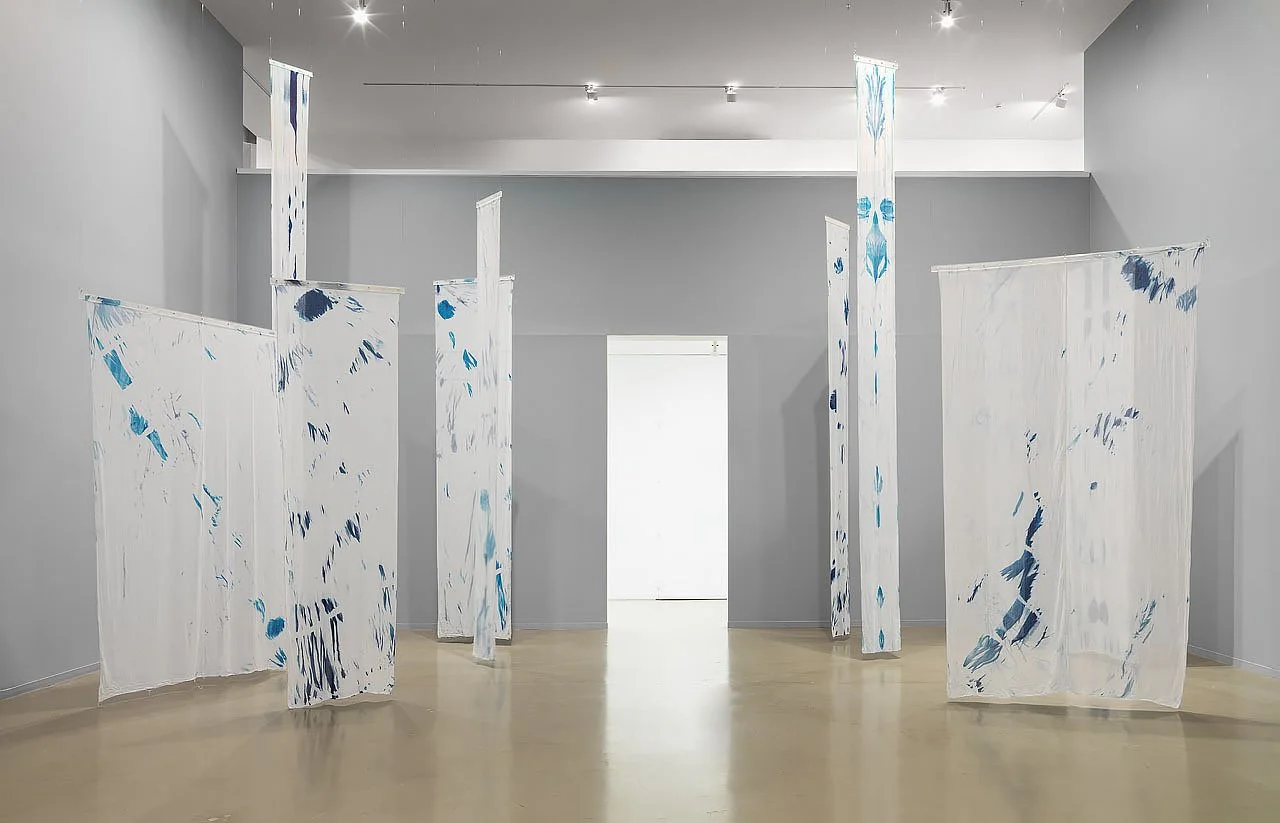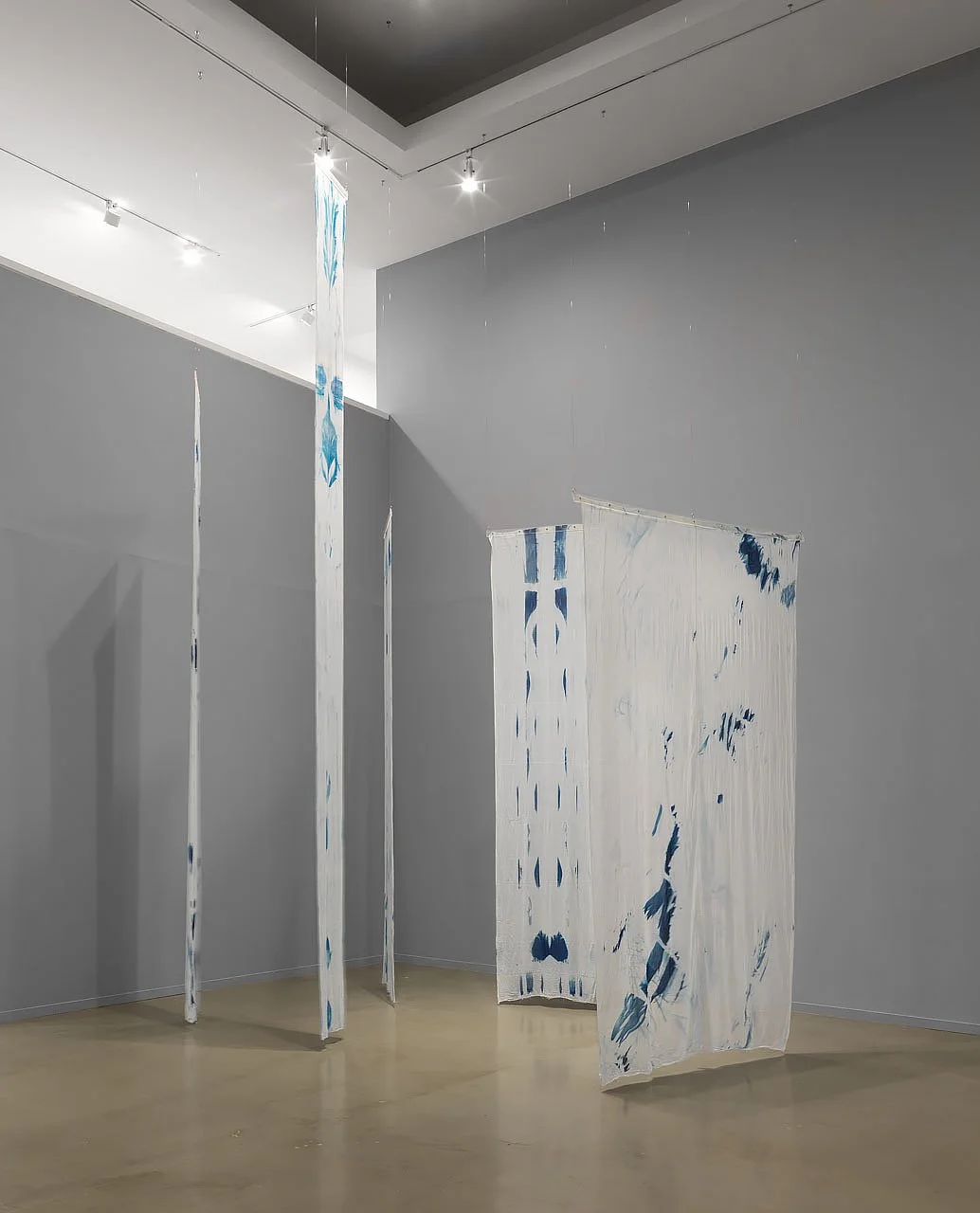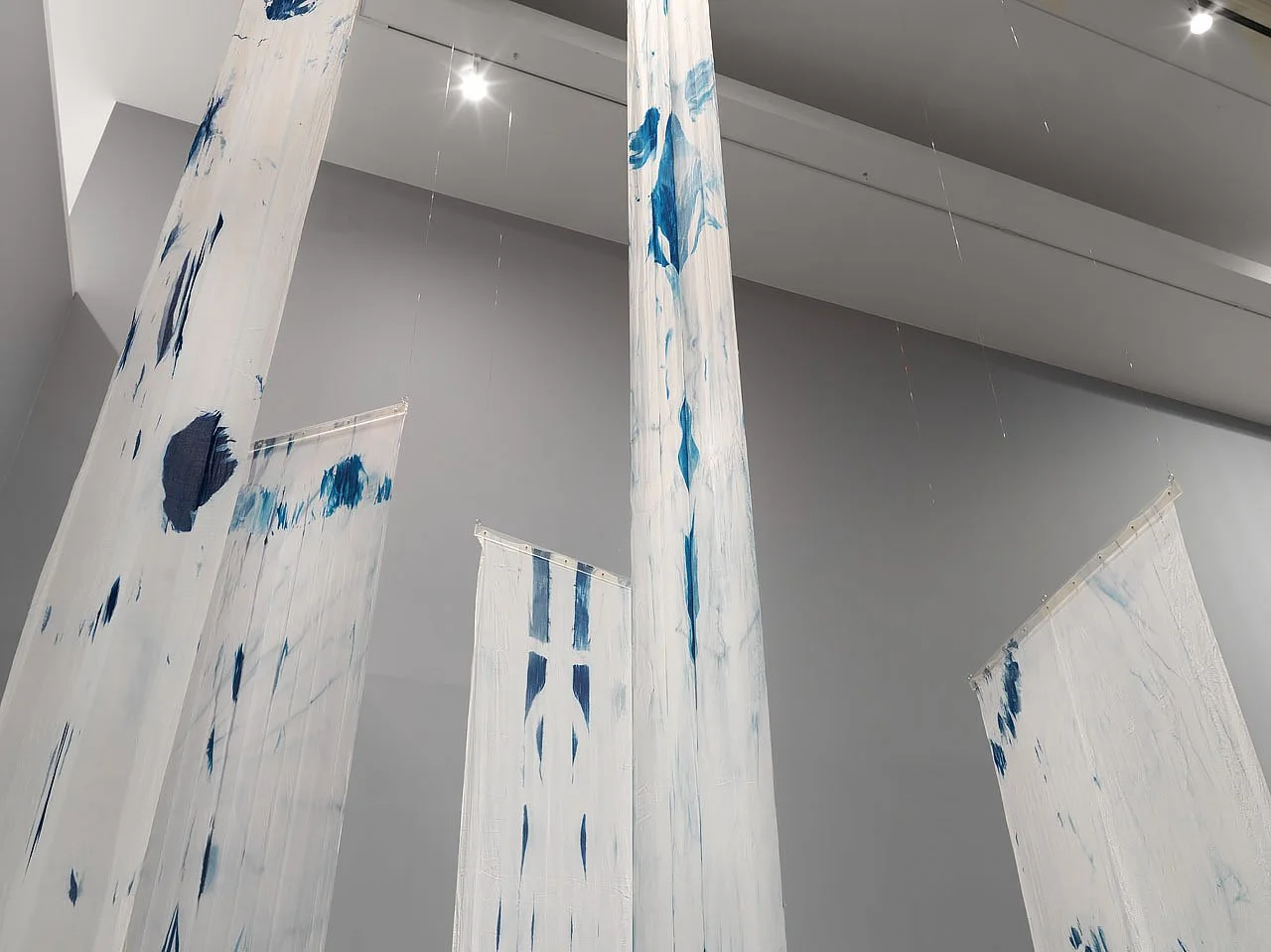Photos by Ian Lefebvre, Vancouver Art Gallery
ਦਸਤਾਰ ਬੰਨ੍ਹਣ ਲਈ ਬਲੂਪ੍ਰਿੰਟ (blueprints for tying a dastaar)
2021
Dastaars, cyanotype chemicals, sunlight
Playing with material memory and embodied knowledge, ਦਸਤਾਰ ਬੰਨ੍ਹਣ ਲਈ ਬਲੂਪ੍ਰਿੰਟ (blueprints for tying a dastaar), marks traces of the everyday ritual of dastaar (turban) tying through a cyanotype process. Soaked in photosensitive chemicals, tied and then worn, the dark blue hue demarcates areas of the textile touched by the sun, while the lighter areas are those that remained hidden in the folds. Unravelled and displayed as a blueprint of the process of tying, the dastaar fabric retains an imprint of how it was worn.
Dastaar styles within the Sikh faith are numerous and are associated with different diasporic and spiritual communities around the world. The varying colours, folding and pleating styles, and ways of accessorizing dastaars speak to the diversity of the Sikh panth, or global community. Moreover, there are unique ways of washing, cutting, drying, and folding dastaars for different styles. Each individual dastaar therefore retains the effects of these processes, as well as the associations of faith and style that have been imprinted into the fabric, documenting a personal relationship to the Sikhi of the wearer. This printed edition is part of a series of works in which Anand has worked with close friends and family, learning a multiplicity of styles and stories related to dastaars.
Conventional terminology around photography suggests a troubling power dynamic lodged in the history of photographic practice. Terms such as “shoot,” “capture,” and “take,” suggest both a violent and extractive relationship between the camera and its subjects. Anand’s decision to use a camera-less process, which results in abstract images, is a deliberate departure from the many photographic images depicting men in turbans as synonymous with terror following 9/11. She considers ways in which the turban has become the dominant signifier for diasporic Sikhs, who, in the face of oppressive governmental and societal suspicion, have sought to uphold with pride the dastaar as that which distinguishes them from others. As such, her work speaks to the limitations of photography as a form that claims to capture reality, and celebrates the embodied knowledge of the dastaar-wearer that is deposited in the fabric.



